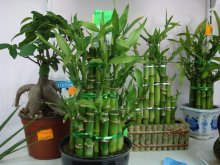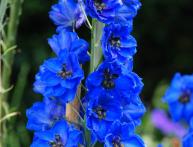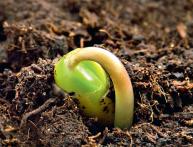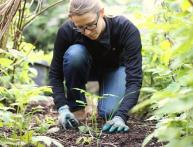How to grow home bamboo, caring for the plant indoors

Informational article about growing bamboo indoors. Features of planting and caring for the plant. What is indoor bamboo often confused with? Everyone knows that in natural conditions, bamboo is the tallest herbaceous plant. In recent years, indoor flower lovers have often grown bamboo as a potted plant. However, many amateur gardeners bamboo called a completely different species.
We are talking about the plant Dracaena Sandera from the genus Dracaena of the Asparagus family. Several popular names have stuck to it, one of which is bamboo of happiness or Chinese bamboo. This type of dracaena looks like several fleshy tube stems with a small number of leaves. They are most often sold in vases, where instead of soil there is water. However, real home bamboo, the care of which will be described below, belongs to a completely different genus and family.
Content:
- What is home bamboo, plant description
- Conditions for bamboo when grown indoors
- How to plant bamboo, care for it
What is home bamboo, plant description
The genus Bamboo belongs to the Cereal family. It includes about 130 plant species. All bamboos are perennial herbaceous evergreens. In the wild they grow in the warm, most often tropical, climate of Asian countries. Many types of bamboo have been domesticated. Subsequently, they became wild again.
The most real bamboo is the common bamboo species. Which is very often used in street landscaping in many countries where there are suitable conditions for it growing. The plant sometimes reaches a height of 30 m. The stem of bamboo is a hollow, cranked straw.
It is in the structure of the stem that real bamboo differs from Sandler's dracaena, the stem of which is very fleshy. The rhizomes of bamboo are powerful, and the type of growth is similar to the roots of the wheatgrass weed.
The leaves are narrow, elongated. The color of the leaf blade is green, although there are species with variegated foliage. Bamboos bloom extremely rarely. Usually the appearance of a flower occurs only at the end of the plant's life. There are known cases when the entire bamboo grove blossomed in one day, and then all the plants dried up at the same time. Bamboo reproduces by rhizomes. The following bamboos are suitable for indoor growing in pots:
- Dwarf bamboo from the genus Pleioblastus, the plant is no more than half a meter in height.
- Golden bamboo is from the genus Pleioblastus, the plant has a powerful root, spreading lush bushes, its leaves are narrow, 8-15 cm long, the height of golden bamboo is 0.7 m.
- Fargesia shiny or large wall has soft, pleasant-to-touch leaves.
All subspecies and species bamboo most often grow in approximately the same conditions. They have similar agricultural techniques when grown in pots indoors.
Conditions for bamboo when grown indoors
The listed types of bamboo and some other plants from this genus grow well in human homes, giving it individuality and uniqueness. It is important to create conditions for bamboo similar to natural ones.
Lighting and soil
To grow bamboo, you need to choose a place in the room where there will be a period of continuous sunlight for about five hours a day. It could be several hours in the morning and several hours in the afternoon. With too intense direct sunlight, as well as with a lack of it, bamboo will grow, but there will be no trace of its attractiveness.
For growing bamboo in a room, universal soil mixed with a small amount of expanded clay or gravel, peat and humus is suitable. In addition, before planting, you need to pour a layer of any drainage up to five cm thick into the pot.
When choosing a pot, you should not take a container that is too small; for most species, the size of the pot should be about 40 cm in height and width. Bamboo is known for its growth rate. At room conditions it also retains this feature.
Temperature
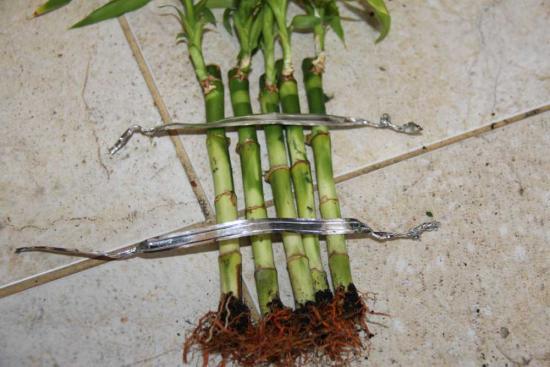
Although bamboo most often grows in the warm tropics, it can withstand colder temperatures. The pot with the plant can be kept in a room where the air temperature is at least + 15 degrees. Although in summer it is advisable to grow bamboo at + 24 degrees. In the spring, around mid-April, a pot with indoor bamboo can be installed on a glazed loggia or veranda. You can grow bamboo there until the first days of October.
How to plant bamboo, care for it
Propagation and watering
Planting material can be obtained by dividing the bush. During transplantation, a part of the root with several shoots is cut off with a sharpened, clean knife. The cut area should be sprinkled with crushed charcoal or ash. You can use root suckers or buy a plant in a store.The newly planted plant is watered moderately and left alone for several days. After landings Do not expose bamboo to the scorching sun.
It is recommended to water bamboo abundantly, but without waterlogging or stagnation of water. In summer, watering is more abundant than in winter. However, throughout the year, bamboo responds well to spraying with warm water. He will need additional air humidification in winter with hot radiators.
Feeding, transplanting
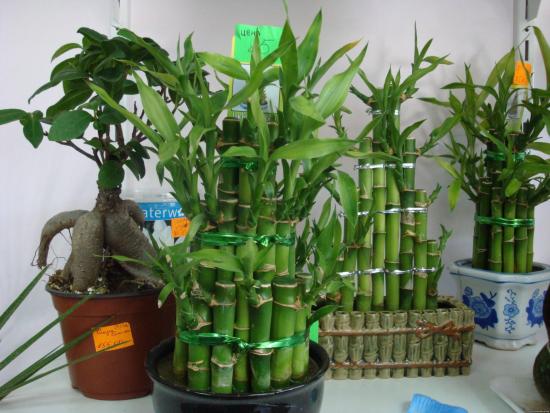
It is optimal to apply fertilizer in liquid form. When growing bamboo at home, you need to start doing this in April and finish in September. The plant is responsive to the application of nitrogen. The frequency of feeding is twice a month.
To give a more aesthetically pleasing appearance, all weak shoots are cut off from the plant; you can also cut off the upper part of the shoots of fast-growing tall species. Replanting is recommended every two to three years. Transplanted into a new pot with a new soil in early spring.
Some features of caring for bamboo:
- the leaves have become brown - this means you need to increase the air humidity and water the plant more intensively
- leaf curling occurs when the temperature is too low, the plant needs to be moved to a warmer room
- slow growth - requires fertilization
If the lower part of the stem is bare, then there is no cause for concern. This is the normal condition of any bamboo.
Video about indoor bamboo:


